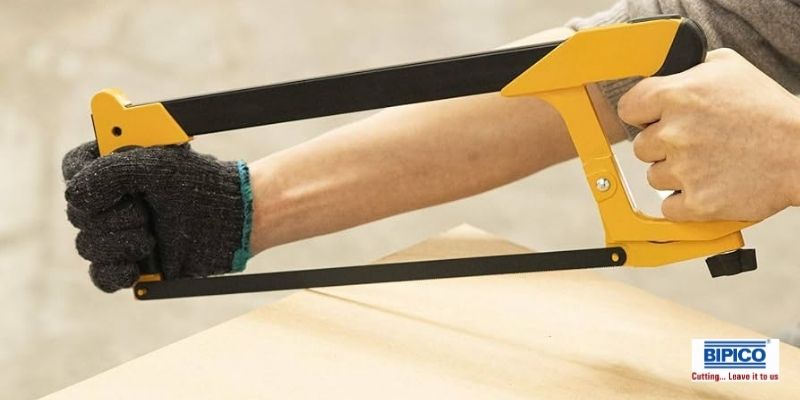The Top 8 Reasons to Switch to Flexible Low Alloy Steel Hand Hacksaw Blades
In the world of metalworking and fabrication, precision and efficiency are paramount. This is why choosing the right tools is crucial for achieving high-quality results. One tool that often goes overlooked is the hand hacksaw, specifically its blade. Traditionally, hacksaw blades were made of high-carbon steel. However, a recent innovation has gained popularity: flexible low alloy steel hand hacksaw blades. These blades offer several advantages that can significantly enhance your cutting experience. Here are the top five reasons to make the switch:
Enhanced Flexibility
One of the key benefits of using low alloy steel hand hacksaw blades is their superior flexibility. Low alloy steel blades can bend without snapping, unlike their high-carbon steel counterparts, which tend to be rigid and prone to breaking under stress. This flexibility allows for more controlled and precise cutting, especially when dealing with irregular shapes or tight corners. It also reduces the likelihood of the blade binding to the workpiece, resulting in smoother, more efficient cuts.
Extended Blade Life
Durability is a critical factor when evaluating the performance of any cutting tool. Low alloy steel hand hacksaw blades excel in this department. They are engineered to withstand prolonged use and are less susceptible to wear and tear. This means you'll spend less time replacing worn-out blades, ultimately saving you time and money in the long run.
Improved Cutting Speed
Efficiency in cutting is a key concern for any professional or hobbyist involved in metalworking. Low alloy steel blades are known for their excellent cutting speed. Their sharpness and superior edge retention allow for faster and smoother cuts, reducing the time and effort required to complete a job. Whether you're working on a small DIY project or a large-scale industrial task, the increased cutting speed can significantly affect overall productivity.
Versatility in Cutting Applications
Low alloy steel hand hacksaw blades are highly versatile and can be used on various materials. Whether working with steel, aluminum, copper, or other non-ferrous metals, these blades provide consistent and reliable performance. This versatility makes them an excellent choice for professionals who deal with various materials regularly.
Resistance to Corrosion
Corrosion is common with metalworking tools, especially when exposed to moisture or harsh environments. Low alloy steel blades are designed to resist corrosion, ensuring that they maintain their sharpness and effectiveness over time. This feature is precious for those working in environments where exposure to moisture, chemicals, or other corrosive elements is a concern.
Reduced Vibration and Noise Levels
Traditional high-carbon steel blades can generate significant vibrations and noise during cutting. This can lead to operator discomfort and fatigue, especially during prolonged use. In contrast, low alloy steel blades have superior dampening properties, reducing vibration and noise levels. This enhances operator comfort and contributes to a safer and more pleasant working environment.
Consistent Performance Across Temperature Ranges
Extreme temperatures can harm cutting tools, causing them to become brittle or lose their edge. Low alloy steel hand hacksaw blades are engineered to maintain performance across various temperatures. Whether working in a scorching hot foundry or a cold workshop, you can rely on these blades to deliver consistent and reliable cutting performance.
Eco-Friendly and Recyclable
In an era where sustainability is a growing concern, it's essential to consider the environmental impact of our tools. Low alloy steel hand hacksaw blades are not only durable and long-lasting, but they are also environmentally friendly. They can be recycled, reducing the overall waste generated in the metalworking industry. By choosing these blades, you're benefiting from their superior performance and contributing to a more sustainable and eco-conscious approach to metalworking.
By taking advantage of these additional benefits, you'll find that flexible low alloy steel hand hacksaw blades offer a comprehensive solution to many challenges in metalworking. Their combination of enhanced flexibility, durability, cutting speed, versatility, corrosion resistance, reduced vibration and noise, consistent performance in various temperatures, and eco-friendliness make them a superior choice for professionals and hobbyists alike. Upgrade your toolkit today and experience the difference these advanced blades can make in your metalworking projects!
Conclusion:
In conclusion, switching to flexible alloy steel hand hacksaw blades is a smart investment for anyone involved in metalworking or fabrication. Their enhanced flexibility, extended blade life, improved cutting speed, versatility, and resistance to corrosion all contribute to a superior cutting experience. By choosing these advanced blades, you'll increase the efficiency of your work and reduce the frequency of blade replacements, ultimately leading to cost savings and improved overall productivity. Upgrade your tools today and experience the difference for yourself!






Comments
Post a Comment